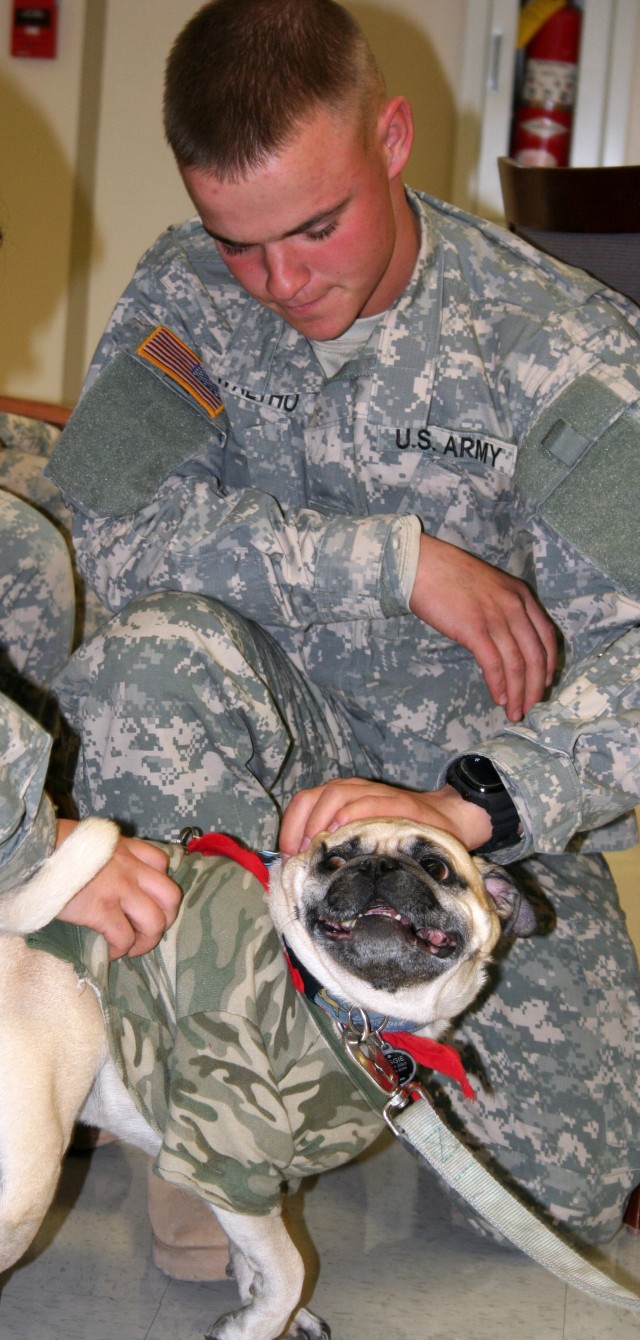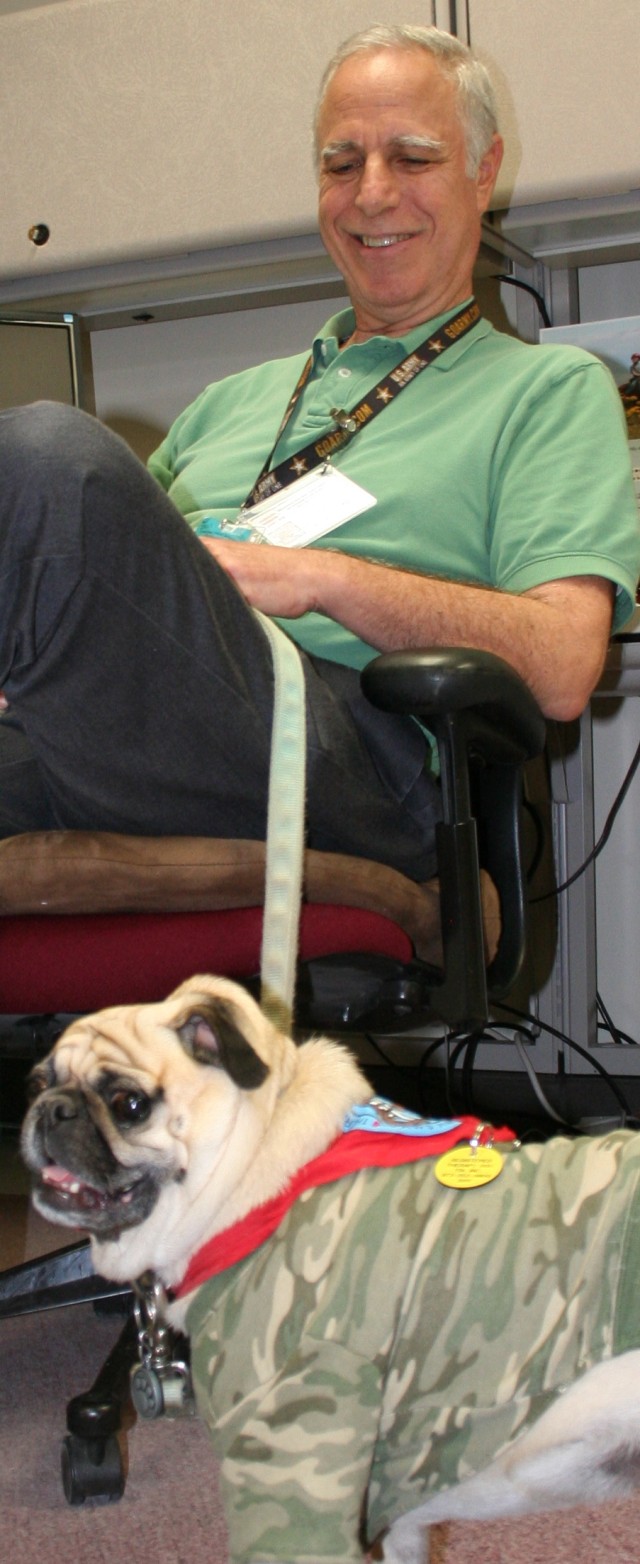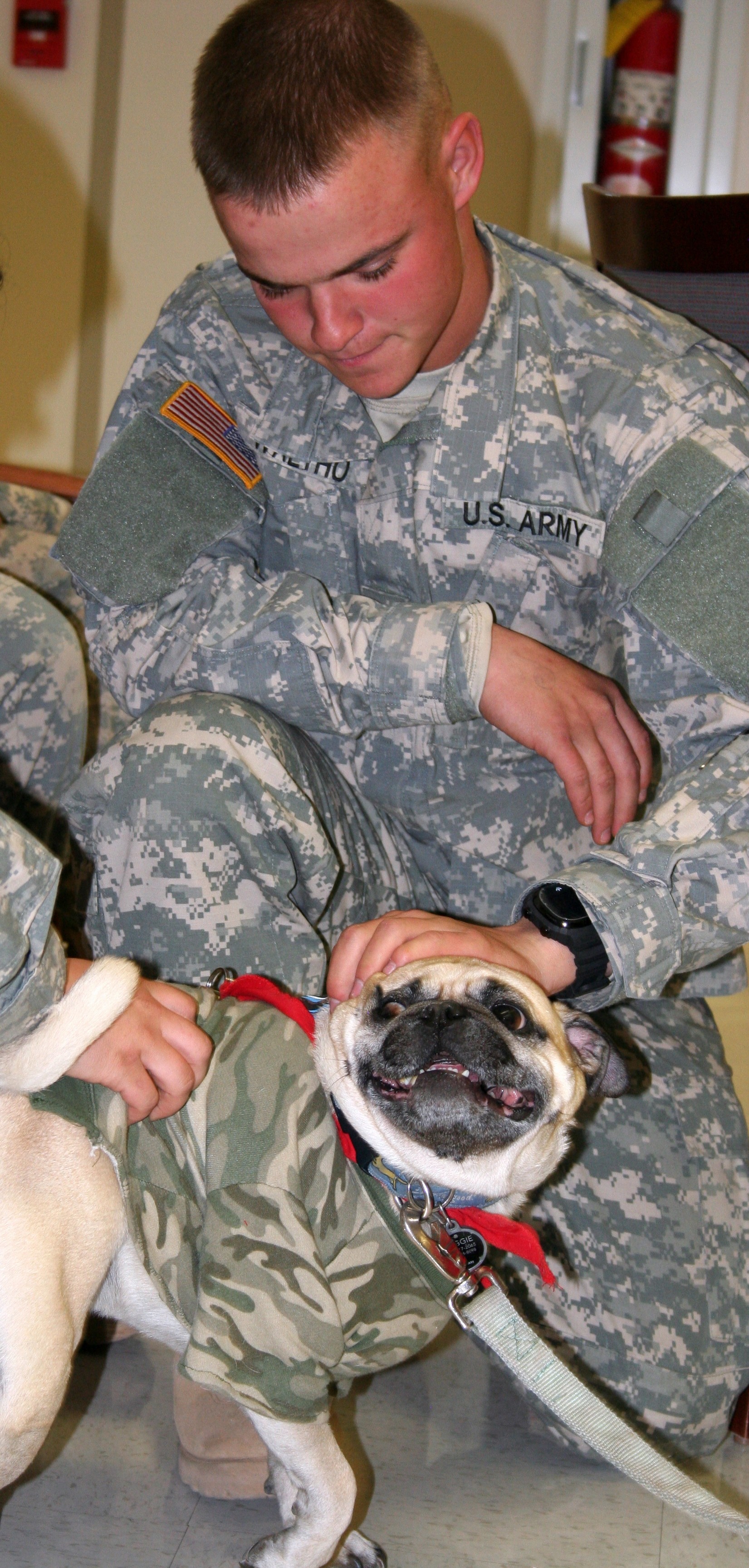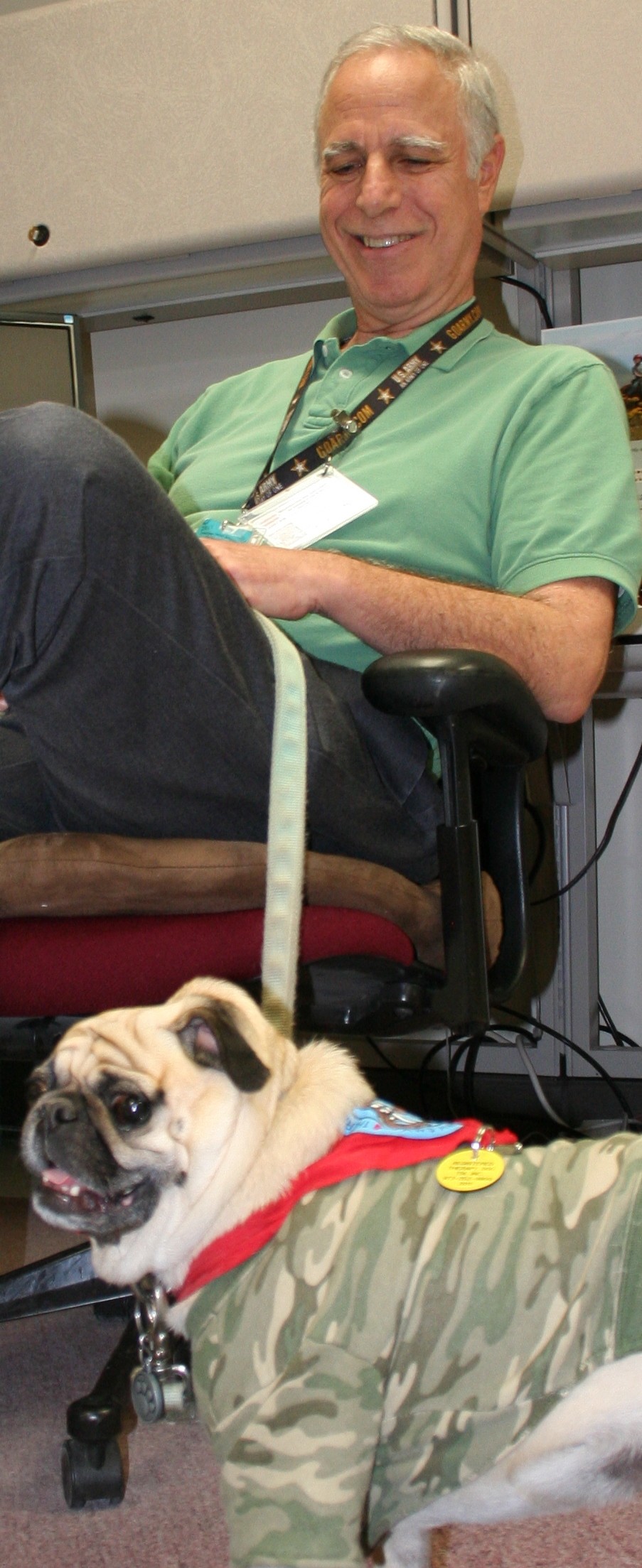FORT HUACHUCA, Ariz. -- One minute, a clerk, nurse or patient is focused on everyday things - rescheduling an appointment, advising a patient, waiting for a prescription. The next minute, there is a palpitable change in the atmosphere, and a cheerful ruckus down the hall intrudes on the daily clinic routine.
One hears laughter and animated voices speaking to a surprise visitor, and wonders what could generate such a wave of communal appreciation. In the middle of the group, near the floor is a compact, wiggling, tan bundle with a black face, wearing a cammo shirt and neck scarf - it's Reggie!
Reggie is the newly-licensed therapy dog at Raymond W. Bliss Army Health Center. Reggie is a pug, and he is irresistible to the staff and patients at RWBAHC. He circulates through the health center about once a week on a leash with his best friend, Dr. Craig Whitman.
Whitman explains the role of a therapy dog. "Reggie allows staff to take a moment to catch their breath and get in touch with their 'kinder, gentler side.' It is a small way to show appreciation for the work that is being performed here to assist our Soldiers and their families."
Whitman, a Ph.D. psychologist, manages the Care Provider Support Program, previously called the Provider Resiliency Program. The program is designed to promote resiliency among health care workers by allowing them to step back from the stressors of providing health care and focus on something else, to learn to take care of themselves in addition to others.
Health care professionals spend a whole career helping others all day, every day, often to the detriment of their own well-being. CPSP helps them take a break from that routine, get centered and recognize what they need to stay healthy and happy so they can continue to provide great health care services to their patients.
Whitman spent six weeks in training with Reggie. "To become a certified therapy dog, Reggie had to pass an extensive test through Therapy Dogs International. For good measure, he also passed a similar test to become a Canine Good Citizen through The American Kennel Club. Both of these tests stress that the dog is safe with strangers and other dogs, that the handler can control the dog, and that the dog will respond to commands. To teach Reggie how to be successful on these tests, we attended 6 classes of Canine Education through the Sierra Vista Parks and
Leisure Program."
Therapy dog training is much different than training for service dogs. "Therapy dogs are "friendly visitors," and should not be confused with assistance dogs or service dogs for the emotionally or physically disabled. Assistance dogs are trained much more extensively and may accompany their handlers into restaurants, clinics, libraries, and similar places." Reggie is only allowed into health care settings in his role as a therapy dog.
Reggie came to live with Whitman six years ago when his son wanted a pug. "It has always been my preference to have larger dogs that were rescued from the shelter. Nevertheless, my son wanted a pug, and so, Reggie came into our lives," Whitman said.
"Pugs tend to remain 'puppy-like' longer than most dogs, 2 to 3 years. They then settle into charming companions who want nothing more than to be at your side. Historically, pugs were bred for companionship by Chinese emperors and Tibetan monks. Don't expect them to respond like second-class citizens or 'dogs.' They will look at you and think things over before committing themselves - unless food is involved," he added.
Although Reggie was trained as a therapy dog this year, Whitman got Reggie as a puppy and said about the training, "What was most difficult for me was making Reggie 'perform' to earn treats and pets when I just wanted to love him. But, the dog trainer said many times that dogs feel better when they engage with you including learning obedience. His 'formal' training took six weeks, but we were always working on new lessons to reinforce them."
Reggie enjoys his weekly forays around the health center, greeting acquaintances and finding new admirers among staff and patients. For a few minutes, he intrudes on their daily routines and brings joy and laughter, then moves down the hall to cheer the next office.




Social Sharing